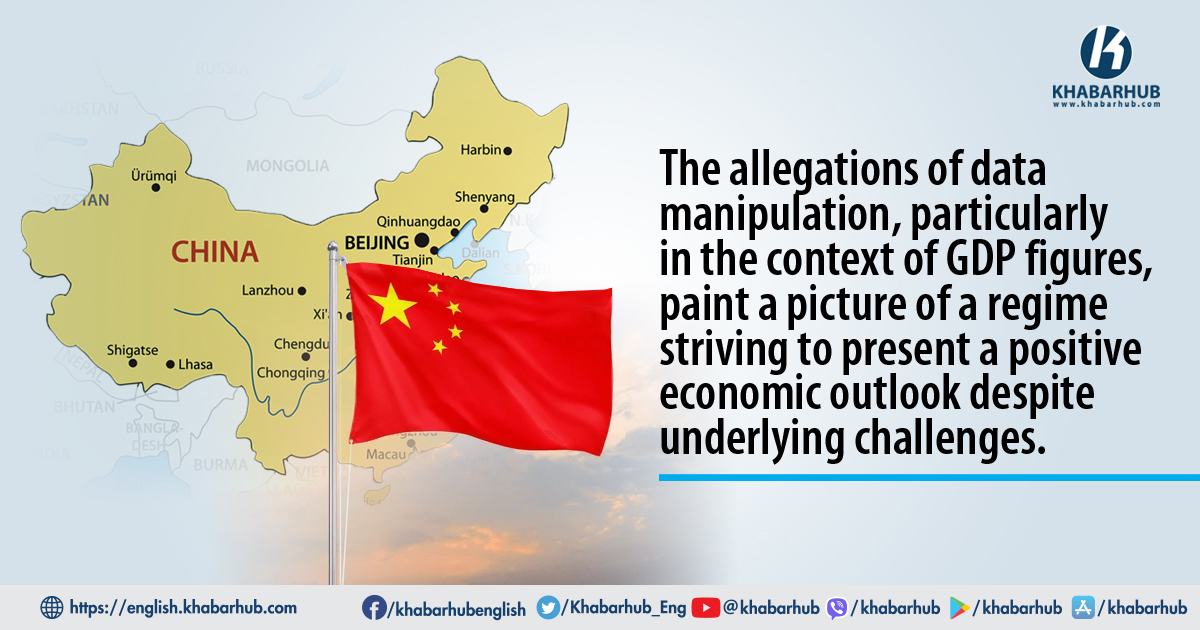The Chinese Communist Party (CCP) has been at the center of controversy surrounding the veracity of its economic data.
While the CCP consistently publishes figures indicating stable economic growth, a growing number of analysts are casting doubt on the accuracy and reliability of these numbers.
The concerns are particularly significant as China’s economy appears to be facing various challenges, including a real estate crisis, diminished consumer confidence, deflation, high youth unemployment, and a decline in foreign investment.
One key aspect of the skepticism revolves around the manipulation of economic data, as highlighted by Li Jun, an independent Chinese TV producer, during an appearance on NTD’s Chinese language program “Pinnacle View.”
According to Li Jun, the GDP of Henan Province in 2023 was expected to exhibit a negative growth rate. However, he contends that the regime manipulated the data from the previous year, creating an illusion of positive growth in 2023.
Shi Shan contends that under the CCP, ethical leadership at the highest levels is lacking, leading to fabricated information and falsified data permeating the entire regime.
This manipulation, he argues, was achieved by reducing the GDP figure for 2022 by over 300 billion yuan (about $41.7 billion), thereby presenting a positive growth rate for 2023.
Li Jun’s claims extend beyond Henan Province, suggesting a more widespread practice across various regions.
He alleges that other provinces, including Fujian, Hunan, and Jiangxi, employed a similar tactic of reducing their 2022 GDP growth figures.
According to Li Jun, the cumulative reduction in GDP figures across these provinces amounted to nearly 630 billion yuan (about $87.6 billion).
What raises eyebrows is that the CCP claimed to have over-calculated 500 billion yuan (about $69.6 billion) in 2022, creating a significant discrepancy in the reported data.
The issue of fabricated economic data is not a new phenomenon in China. Frank Tian Xie, a business professor at the University of South Carolina Aiken, points out that the CCP started publishing fraudulent figures during China’s “reform and opening up” in the late 1970s.
Before this period, China operated under a planned economy, which did not measure economic growth based on GDP.
The shift to using GDP as a metric provided the CCP with a tool to gauge the political performance of Party officials at local levels and attract foreign investment.
Professor Xie argues that this reliance on manipulated data had successfully attracted foreign investment for several decades.
However, he notes that foreign investors have become increasingly skeptical in recent times, leading to a withdrawal of investments.
To further compound the issue, Professor Xie highlights that the CCP has not allowed foreign market research firms to conduct independent research in China.
This lack of transparency prevents the exposure of accurate economic figures, inflation rates, and per capita income, among other critical metrics.
The centralization of power and the top-down hierarchy within the CCP contribute to an environment where political considerations dominate every aspect of the regime.
Guo Jun, a leading journalist, emphasizes on “Pinnacle View” that China’s National Bureau of Statistics, the entity responsible for compiling and publishing economic data, is essentially a political tool of the CCP. According to Guo Jun, Beijing sets the growth targets, and all levels of government and departments are obliged to comply with these targets.
The manipulation of economic data is not confined to GDP figures; it extends to various aspects of demographic and employment statistics.
Guo Jun notes that planned births, population data, employment figures, and even the number of deaths are subject to the regime’s political agenda. This allows for a wide-ranging manipulation of information to suit the political narrative of the CCP.
To regain trust, the CCP may need to consider adopting more transparent and internationally accepted methods of data collection and reporting.
Shi Shan, a senior journalist, provides additional insight on the dynamics within the CCP.
He argues that the CCP’s top leaders face a legitimacy problem, as the existing system fails to bring legitimacy to its authoritarian rule.
To compensate for this legitimacy deficit, the CCP relies heavily on propaganda to maintain its grip on power.
Shi Shan contends that under the CCP, ethical leadership at the highest levels is lacking, leading to fabricated information and falsified data permeating the entire regime.
The lack of trust in China’s economic data is not merely an internal issue; it has broader implications for the global economic landscape.
The CCP’s reluctance to allow independent foreign market research firms to conduct surveys in China raises concerns about the accuracy of economic information provided by the regime.
This lack of transparency can affect international investors’ confidence and decision-making, potentially impacting global financial markets.
It is crucial to recognize that the skepticism surrounding China’s economic data is not a recent development.
As early as the late 1970s, with the advent of economic reforms, there were indications of the CCP manipulating figures to project a favorable image and attract foreign investment.
The persistence of these practices has led to a situation where the credibility of China’s economic data is increasingly questioned, both domestically and internationally.
The challenge for the CCP lies in striking a balance between maintaining control and fostering transparency.
As China continues to play a crucial role in the global economy, addressing these concerns becomes imperative for fostering trust and maintaining stability in the international financial landscape.
The current top-down approach, where Beijing sets growth targets and local governments align their data accordingly, leaves ample room for manipulation.
To regain trust, the CCP may need to consider adopting more transparent and internationally accepted methods of data collection and reporting.
In conclusion, the concerns surrounding China’s economic data are multifaceted and have deep-rooted historical origins.
The allegations of data manipulation, particularly in the context of GDP figures, paint a picture of a regime striving to present a positive economic outlook despite underlying challenges.
The lack of transparency and the political agenda driving data manipulation raise questions about the reliability of China’s economic information.
As China continues to play a crucial role in the global economy, addressing these concerns becomes imperative for fostering trust and maintaining stability in the international financial landscape.









Comment